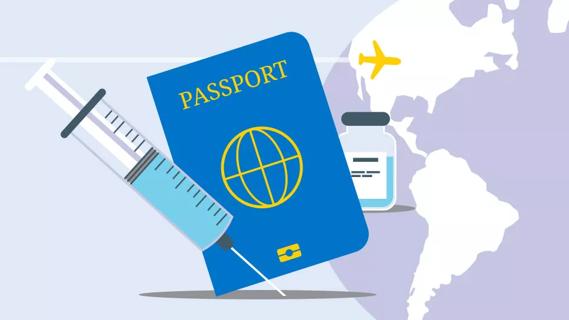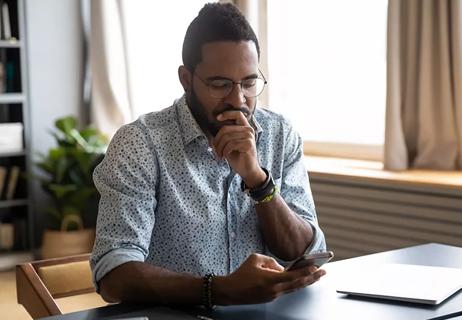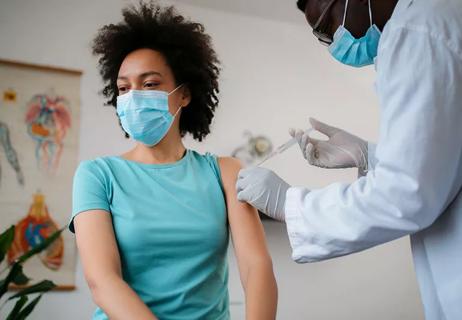They have many overlapping symptoms but some key differences

These days, the moment you develop a little cough or start to feel slightly sick, your brain might immediately go to COVID-19.
Advertisement
Cleveland Clinic is a non-profit academic medical center. Advertising on our site helps support our mission. We do not endorse non-Cleveland Clinic products or services. Policy
But some of the common symptoms of COVID-19 are similar to other common viral infections, including the flu (not to mention colds and seasonal allergies). Both viruses can both make you feel lousy, but they’re different illnesses caused by different viruses.
Infectious disease specialist Kristin Englund, MD, shares insight into the key similarities and differences between COVID-19 and the flu.
The flu has been around for many years. During winter months, two types of influenza viruses, types A and B, cause outbreaks, though getting a flu shot can provide you with strong protection. SARS-CoV-2, the coronavirus that causes COVID-19, is a newer virus.
“This was something we’d never seen before, so no one had natural immunity against it,” Dr. Englund explains. “That’s why it’s been able to spread worldwide so rapidly — because no one was protected.”
Here’s something the viruses have in common: Both coronavirus and the flu are passed from person to person in similar ways — through droplets that come out of an infected person’s nose and mouth when they cough, sneeze or talk. When another person inhales these droplets (or touches a surface contaminated with the virus and then touches their mouth, nose or eyes), they can become infected, too.
Advertisement
Importantly, both viruses can be spread by people who are infected but not showing symptoms. Stay home if you’ve been exposed or infected so that you don’t risk spreading the flu or COVID-19 to others.
Mild cases of COVID-19 present similarly to the flu. “The symptoms are virtually the same, especially new infections in people who have been vaccinated,” Dr. Englund says. “Breakthrough cases with mild symptoms may feel very similar to the flu.”
According to the CDC, both COVID-19 and the flu can lead to a range of mild to severe illnesses. They both may cause:
Some people with COVID-19 also develop other symptoms not associated with the flu. They include:

If you experience the symptoms of COVID-19 and/or the flu, call your doctor’s office. They may direct you to the emergency room, their office or online for a virtual visit, or give you instructions for getting tested for one or both of the viruses.
If you have severe symptoms, such as chest pain, shortness of breath, dizziness or a severe headache, go to the nearest emergency department or dial 911.
Getting tested is the only real way to tell the difference between COVID-19 and the flu. “Even if you’ve been vaccinated, it’s still reasonable to get yourself tested so that you know whether this is influenza versus a breakthrough of COVID-19,” Dr. Englund says.
There’s another benefit to getting tested: When you know which virus you have, you can get treatment (or treat yourself) accordingly.
“For each of them, it’s about symptom control,” Dr. Englund says. “For COVID-19, you want to make sure you’re keeping an eye on your temperature and using a pulse oximeter, a small device you put on your finger to make sure that your oxygen levels are in a normal range.”
Advertisement
Typically, flu symptoms stick around for four or five days — maybe even up to seven days, Dr. Englund says, while the CDC reports that people with mild to moderate COVID-19 remain infectious for about 10 days after symptom onset.
Some people continue to experience the effects of COVID-19 even after they’ve stopped being contagious. “Long-haulers,” as they’re called, are those who still experience some sort of symptom 28 days or later after they were first infected.
“Most people with either illness can recover at home with rest, fluids and over-the-counter medicines for fever or body aches,” Dr. Englund says. “But in some cases, they can both result in complications like pneumonia, acute respiratory distress syndrome and inflammation of the heart, brain or muscle tissue. These complications are more likely to affect older adults and people with underlying medical conditions.”
Additional complications associated with COVID-19 include blood clots and multisystem inflammatory syndrome.
If you contract either virus, it’s important to monitor your symptoms and stay in touch with your doctor.
A few simple steps can make a big difference in keeping you healthy and curbing the spread of COVID-19 and the flu:
Advertisement
And for both viruses, there’s one key way to protect yourself: vaccination.
All three COVID-19 vaccines approved for use in the United States are safe, effective and potentially life-changing. Though breakthrough cases of COVID-19 are possible, fewer than 0.005% of fully vaccinated Americans have experienced a breakthrough case resulting in hospitalization or death.
Just be sure to get vaccinated against both COVID-19 and influenza, because getting just one of the vaccines won’t protect you from the other virus.
“The viruses that cause influenza are completely different from the virus that causes COVID-19, so they require different vaccines to help you build immunity to them,” Dr. Englund explains.
“A COVID-19 vaccine will not protect you against influenza and vice versa. So in this season of respiratory illness, it’s critically important for everybody to get both types of vaccines to be able to protect themselves and their families.”
Advertisement
Learn more about our editorial process.
Advertisement

Plan early — getting the right vaccines can help you stay healthy on your travels

Getting routine vaccinations together can save you time and may be more effective

Embarrassing or shaming often makes people defensive, which makes change more unlikely

They can stop an infection before it gets you sick or prevent you from becoming seriously sick

A compromised immune system requires precaution

From influenza and pneumococcal to hepatitis B and shingles, vaccines are key to staying healthy

The list includes shots for 16 potentially harmful diseases

Pain after a vaccine is normal — but here's how you can avoid it

Type 2 diabetes isn’t inevitable with these dietary changes

Applying a hot or cold compress can help with pain